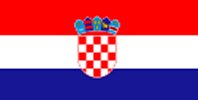 |
|
 |
|
So our last leg was here, back to Dubrovnik. We were spending one more night onboard and were invited to take a bustrip to visit the Watermills at Konavle and also a stop in the small city of Caftat. We had no other plans so we joined and were not disapointed for doing that.
Konavle is a narrow field located between the Snijeznica mountain and the Adriatic Sea, spanning the area from the coastal town of Catatat to the Montenegrin border at Prevlaka. Other than Cavtat, only the southernmost village of Molunat is located on the coast, while the other 30 villages are in the hinterland. The Sniježnica peak at 1234 meters of altitude is the highest point of the Dubrovnik-Neretva County and village of Kuna with its 700 m altitude is the highest village in the county. Even though considerably damaged during the Croatian war, Konavle maintain its status as one of the wealthiest counties in all of Croatia.
Caftat was founded by the Greeks in the 6th century BC under the name of Epidaurus. The surrounding area was inhabited by the Illyians, who called the city Zaptal. The town changed its name to Epidaurum when it came under Roman rule in 228 BC. Justinian I the Emperor of the Byzantine Empire sent his fleet to Cavtat during the Gothic war (535-554) and occupied the town. The city was sacked and destroyed by the Ayars and Slavs in the 7th century. Refugees from Epidaurum fled to the nearby island, Laus which over time evolved into the city of Dubrovnik. The town was re-established in the Middle Ages. After a short while it came under the control of its powerful neighbor, the REpublic of Raqusa. The modern Croatian name for the city reveals its ancient origins and its link with Dubrovnik. Cavtat is derived from Civitas Vetus, that means old city in Latin.
Click on a folder to see the pictures